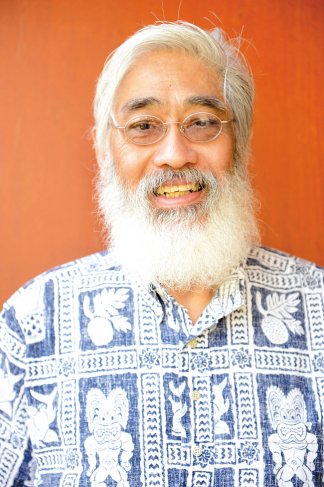Hula For Breast Cancer Survivors
Dr. Clayton Chong
Senior adviser for UH Cancer Center’s hula study for breast cancer survivors
Where did you receive your schooling/training?
At the University of Hawaii John A. Burns School of Medicine.
Currently I am a co-investigator on the UH Cancer Center hula study, which is being co-led by researchers at the cancer center, Drs. Erin Bantum and Lenora Loo.
Can you provide some background on UH Cancer Center’s hula study for breast cancer survivors?
Breast cancer is the most common cancer among women in the United States. Recent advances in early detection and treatment have led to an increase in breast cancer survival, and we anticipate this number will continue to rise with improved screening methods and treatment strategies. There is a growing need for informed lifestyle choices for breast cancer survivors, so my team is working toward helping survivors regain their health following treatment, preventing breast cancer recurrence and improving overall quality of life.
Many studies have shown that exercise has both psychological and physical benefits for breast cancer survivors. The American College of Sports Medicine recommends that cancer survivors engage in routine moderate physical activity at least 150 minutes each week. Yet, estimates show that most cancer survivors are not reaching these recommendations. We have started a study to determine if hula might be an enjoyable and effective strategy to increase physical activity for breast cancer survivors.
What made you choose hula?
In Hawaii, we live in a unique multicultural community, and hula is a familiar form of cultural expression in dance. We believe hula can benefit cancer survivors on multiple levels. Hula requires aerobic activity, whole-body movement that engages the arms and shoulders, concentration and memorization. An earlier study led by Dr. Todd Seto and Mele Look of Queen’s Medical Center and University of Hawaii John A. Burns School of Medicine demonstrated that hula was beneficial for the rehabilitation of individuals with cardiovascular disease.
Who is eligible for the study?
Female breast cancer survivors over 21 years of age who have completed treatment at least six months ago and not more than five years ago, and who are not currently exercising more than one hour per week.
How often will the hula group meet and how long will the study last?
Participants in this study will attend free one-hour hula classes at the University of Hawaii Cancer Center in Kakaako twice a week for six months. They will be asked to provide a blood sample so that we can measure the biological changes that happen with increased exercise. They also will be asked to complete a questionnaire at the start and end of the six-month program to determine if increasing exercise has impacted their emotional state and lifestyle.
Who will teach the classes?
We have two hula instructors who will teach our classes for this study: Jean Serikawa and TeMoana Makolo. They both danced and assisted with teaching hula to people of all ages, from 5 to 75, for the late kumu hula Leilani Alama for more than 60 years. Jean Serikawa currently helps teach Aunty Leilani’s hula motions as an alaka’i (guide or leader) to perpetuate her style of dance. TeMoana Makolo, Leilani Alama’s niece, has an extensive hula and Tahitian background under the tutelage of Aunty Leilani Alama.
For more information, visit uhcancercenter.org. Women who are interested in participating in the study can call 441-8190 or email hulastudy@cc.hawaii.edu.






